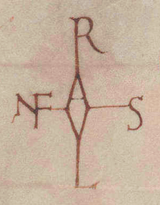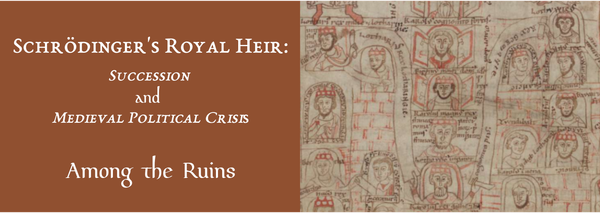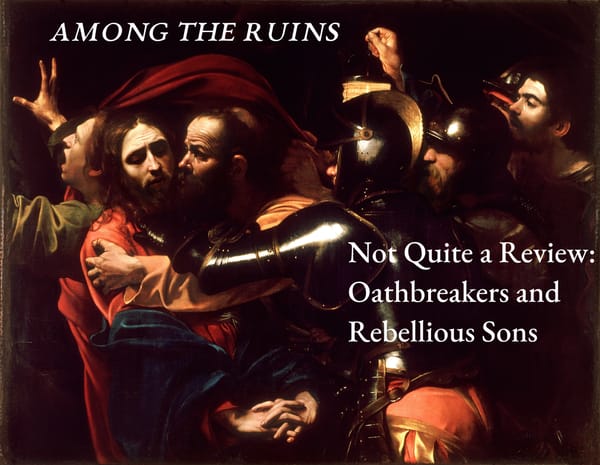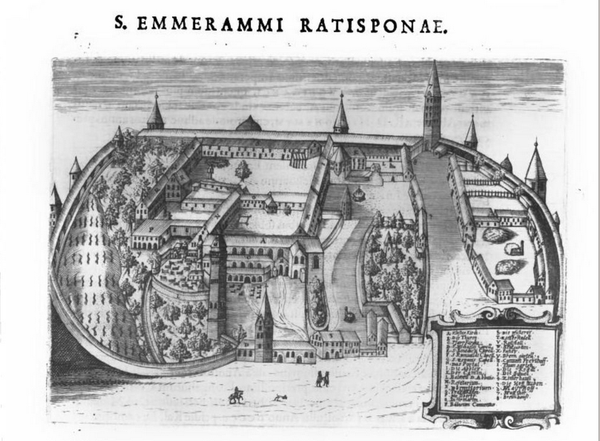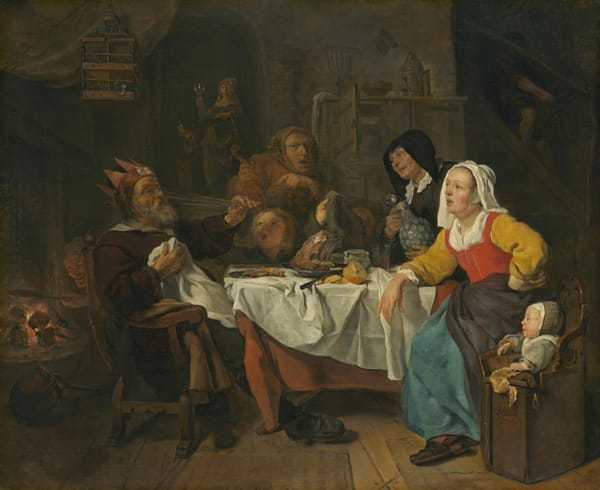Narratives of Revolt and Loyalty at St. Gall: Leeds IMC Preview 2025
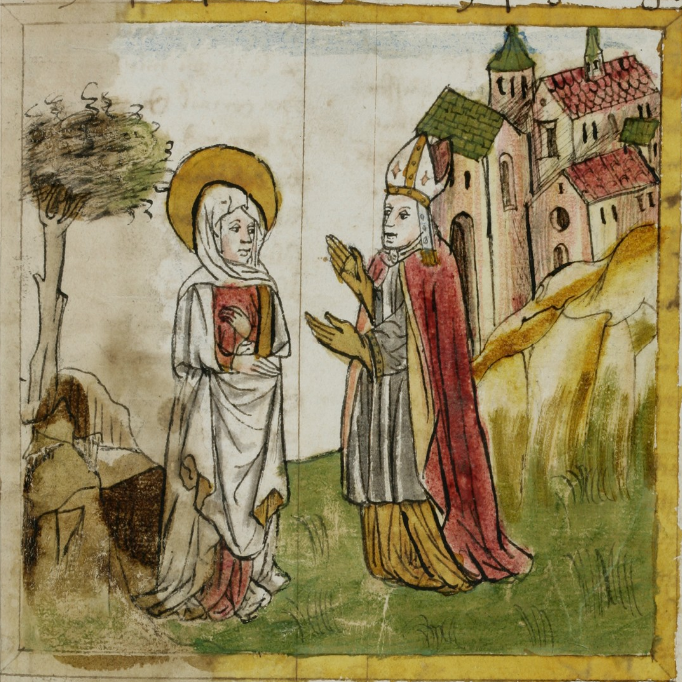
Rapidly approaching is this year's Leeds International Medieval Congress, one of the biggest conferences for medieval studies in the world. It is a great place to hear new research and to meet other scholars, not to mention the general social and celebratory atmosphere it tends to have. This year I organized a series of three panels with a colleague of mine. The broad theme is "Charters as repositories of knowledge" and each concentrates on a particular aspect of studying charters. My paper concerns the creation of historical memory in these documents, what follows is a slimmed down version of the paper I will be delivering at the conference.
While writing my dissertation I came across several instances where Arnulf’s charters selectively presented his Carolingian authority, meaning they emphasized his descent from Carolingian rulers at certain times and in certain places. I believe this to be a way of using charters to create a specific version of the Carolingian past for political purposes. The idea that charters create historical narratives has been remarked on by scholars such as Geoffrey Koziol and Sarah Foot.[1] Generally, however, historians discuss one specific charter as creating a narrative localized in a specific moment. What I want to do here is talk about 1) the process of narrativization in charters, and 2) how these narratives could be affirmed and renegotiated over time. The particular context for this is the revolt of Bernard against Arnulf in the early years of Arnulf’s reign.
Arnulf had become king in 887 after overthrowing his uncle Charles the Fat. This meant from the beginning that Arnulf’s reign was on somewhat shaky ground as a usurper. It was during this early part of the reign that Bernard, Charles the Fat’s illegitimate son, tried to launch a revolt centered on Charles’ former power base in Alemannia.
Our evidence for this revolt is very patchy, little more than a few scattered references. The Annales Fuldenses, a ninth century chronicle with a specifically Bavarian continuation that covers the years of Arnulf’s reign, notes in the entry for 890 that Arnulf intended to travel to Rome at the request of the pope but that he “refused the request, however unwillingly, having been shackled by many causes arising in his kingdom.”[2] The Annales Alamannici gives us a clue that this is a reference to Bernard’s revolt: the entry for 890 notes that “Bernard, the son of Charles, barely escaped from Raetia.”[3] A couple charters help us narrow down the revolt to between May and August 890. After the revolt tensions remained: in 891 the Alemannian army refused to accompany Arnulf on campaign against the Vikings.[4] The Annales Alamannici also revealed Bernard’s fate: sometime in 891 or 892 he was killed by a Rudolf, probably the dux of Raetia.[5] Beyond these fragmentary mentions, our knowledge of Bernard’s revolt comes from the charters of Arnulf and his son Louis the Child. This itself suggests perhaps the extreme danger that the revolt posed to Arnulf’s nascent reign. Perhaps information was repressed or sources such as the Annales Fuldenses, potentially written by one of Arnulf’s chaplains, passed over the event in relative silence. What was good for Arnulf is a challenge to the historian! Indeed Bernard is not even named until the early tenth century.
As is common in Arnulf’s charters dealing with challenges to royal authority, they are frustratingly opaque in providing details. An undated charter from 890 returned confiscated lands which Odalric and his wife possessed in Alemannia and Alsace. Arnulf confiscated this land because “Odalric together with his wife offended against our [Arnulf’s] royal majesty with a wicked plot.”[6] Left unsaid is what the context of Odalric’s treachery was. Odalric was a count in the area of Alemannia and was part of a family which Louis the German promoted in western Bavaria and Upper Pannonia in the 850s and 860s.[7] It seems highly probable that Odalric was a supporter of Bernard, but the charter carefully avoids any mention of him. This charter, written by a St. Gall scribe, reveals that Arnulf had originally granted the confiscated lands in benefice to Hatto, the abbot of Reichenau and future archbishop of Mainz, but now Hatto was coming to Arnulf asking that he return the lands to Odalric.[8] The charter itself is undated, but a reasonable guess would be after August. Plausibly it was around Christmas when, as the annalist tells us, Arnulf “for the purpose of prayer in Alemannia, came to Reichenau and Constance.”[9] Perhaps during this trip Arnulf met with Hatto who asked for the grant as a way of reconciling the king and Odalric. If this charter can be dated towards the end of 890, then, it gives us a very brief “first draft” of the narrative around the revolt which emphasized Odalric’s treachery and the mercy of both Hatto and Arnulf.

A few years later, however, we get a more refined version of this narrative. The abbot of St. Gall, Bernard, was removed as abbot during the revolt and replaced by Solomon III. We know that Bernard did not die, but was actively removed, because a charter informs us that Arnulf had installed Solomon III as abbot there. This was done because Arnulf’s “serenity was disturbed to such a degree on account of the disrespect and carelessness of certain men.”[10] This charter is quite odd, however, because it is a rare example where we have two versions of the charter, with the first being an actual draft of the charter. This draft exists in the original at St. Gall, having been written in a book hand instead of the regular diplomatic minuscule. Because of this it was long believed to be a tenth-century copy of the charter, but closer examination by Tangl in 1900 convincingly demonstrated it came before the charter.[11]


D A 103 and the draft copy. The first image shows the signs of authority such as the monogram and seal. St. Gall Stiftsarchiv A1 A5a and A1 A5 respectively.
There are only subtle differences between the text of the two documents, however. For instance the draft points out the location of St. Gall in Durgogue sito but this is removed from the final charter. In both versions Arnulf was the one who had first installed Solomon because “our serenity was disturbed to such a degree, that we removed the honor from a certain abbot [Bernard], given to him by us, and we placed our loyal chaplain Solomon in his place.”[12] It is thus possible that we get a new view of Bernard’s revolt. Unlike the charter involving Odalric, written soon after the revolt, which couched it clearly as Odalric’s fault, this charter has broadened the stakes by noting it was a larger challenge “of certain men.” It is also inserting this into a broader narrative about Solomon’s installation as abbot, which was firmly centered on Arnulf’s own agency. The draft and completed document also contain an intitulatio that identifies Arnulf as a “defender and son of the Catholic church.”[13]
The arenga, the statement at the beginning of a charter which describes the reason the king was making the grant, is worth analyzing. Susanne Zwierlein has argued that the arengae in the charters of Louis the Pious were directed at the recipients, but in the cases when the recipient wrote the arenga it was actually addressed at the king by placing the recipient's ideas of royal authority in the king’s mouth.[14] This charter was seemingly written by a St. Gall scribe, with some courtly oversight, so this may reflect Solomon’s ideas that were then approved by the court. The arenga begins with a claim that Arnulf “with heavenly arrangement has been raised into the kingdom of our fathers, namely the kings and emperors.”[15] This language is reminiscent of Gregory the Great, who in his Commentary on Job, noted that “all humans are equal by nature; but it is undertaken with a dispensatory arrangement that we seem to have been put in front of others.”[16] Jonas of Orleans would quote this passage from Gregory in his ninth-century lay mirror in order to justify the present social hierarchy.[17] The thus charter contained an important political claim in 892. Coming soon after Bernard’s death, this was a pointed statement: it was not enough that Arnulf had been chosen by divine grace to rule, but that he was taking over the kingdom of his ancestors.
Perhaps we can get, then, a sense of the message that Solomon hoped to convey to the king or his court, of a loyal servant whose service to Arnulf was to be rewarded with confirmation of Carolingian grants to the monastery. In doing so Arnulf would thus become the “defender and son of the Catholic church,” a title which appears nowhere else in Arnulf’s charters. Arnulf’s charter thus served the interests of all the parties involved: the monastery received confirmation of past privileges, Solomon’s position and loyalty to Arnulf were publicly solidified, and Arnulf’s role as a restorer of order and defender of church property was reaffirmed. Intertwined with this was a new narrative of Bernard’s revolt that emphasized Solomon’s loyalty against the “certain men” who had allied with him. Like the charter for Odalric, however, Bernard’s name is still not mentioned.
One needs to wait until after Arnulf's reign to see Bernard mentioned by name. A charter of Louis the Child from 903 confirmed the privileges for St. Gall which had been given to Solomon by Arnulf. This charter notes explicitly for the first time that Bernard had been “resisting the royal majesty and [was] the invader of another’s kingdom.”[18] This charter also names the abbot Bernard as being replaced due to his “crimes” and that Solomon was “placed first by the royal power and then with the communal deliberation of all the brothers in that place of serving the lord.”[19] This perhaps reflects the outcome of the process of narrativization that began in 890. That is, the process of the charter not only negotiated the rights and privileges involved, but also the narrative surrounding Solomon’s installation as abbot in the wake of Bernard’s revolt. While the 892 charter stressed Arnulf’s role, the 903 charter placed more emphasis on the monastic community.
Want to support Among the Ruins? Consider donating here! You can donate as little or as much as you want. Any amount is greatly appreciated and goes towards site and research costs.
This was not the final time Bernard’s revolt would appear in the charters. Another charter from Louis’ reign returned lands from a priest Isanrich, who “consented to Bernard’s resisting the royal majesty.”[20] Hatto came to Louis and requested the young king restore the land which “had been joined to the royal fisc.”[21] Lest we think Hatto was simply kindhearted, Isanrich seemingly held the land from Reichenau, and on his death the land was meant to return to the monastery where Hatto was abbot.
Both these tenth century charters name Bernard explicitly, suggesting that the danger had passed and it was now more acceptable to mention the revolt directly. At the same time, however, memory of the revolt remained in East Francia almost fifteen years after the event. Solomon III and Hatto were both active participants in helping Arnulf retain control in Alemannia, so they would have carried those narratives with them into the tenth century. What could be expressed, in the case of Bernard and St. Gall, was to establish the narrative of Solomon’s installation as abbot. Contemporaries, none more so than Solomon, would have understood what the context was. By Louis the Child’s reign, when this had moved further into memory, it was probably necessary to clearly delineate the revolt. Ekkehard, writing his continuation of Ratpert’s Casus Sancti Galli in the eleventh century, begins with Solomon III and provides a much later version of the narrative: “After Abbot Bernhard was deposed, as related elsewhere, Salomo was presented to us by Archbishop Hatto and assumed the responsibility for our monastery. Afterward he saw to enhancing its importance in the eyes of God and men, ahead of all the other monasteries that he governed. After presiding over us for a year and a half, he was finally made God’s prelate in Constance, its pastor and bishop.”[22] Ekkehard is somewhat confused, because Solomon was made abbot after becoming bishop of Constance, and we have little evidence for Hatto’s involvement, who was not yet archbishop of Mainz. Importantly, Ekkehard notes that the story of Bernard’s deposition as abbot is related elsewhere, and a reader of the twelfth or thirteenth century manuscript has glossed this phrase with “in alio libro”: in another book, suggesting this was actually still there in the St. Gall library in the later Middle Ages.[23]

What I’ve hoped to show is how the narrative of Bernard’s revolt, the abbot’s deposition, and Solomon’s installation as abbot, morphed and crystallized over time, in part as a reaction to political circumstances, but also as a way of cementing Solomon’s authority. As such this is a story of memory, narrativization, and how the interests of court and courtier could intersect and reinforce. The various charters all serve to create a specific vision of the past.
Thanks for reading Among the Ruins! If you enjoyed this piece please consider sharing it on social media and help me grow my reach!
- G. Koziol, The Politics of Memory and S. Foot, “Reading Anglo-Saxon Charters: Memory, Record, or Story?”
- AF (B), s.a. 890, p. 119: Sed rex multimodis causis in suo regno excrescentibus praepeditus quamvis non libens postulata denegavit.
- Annales Alamannici, W. Lendi (ed.), Untersuchungen zur frühalemannischen Annalistik; die Murbacher Annalen mit Edition (Freiburg, 1971), s.a. 890, p. 182: berenhart filius karoli vix de retia evasit.
- AF (B), s.a. 891.
- Annales Alamannici, s.a. 891, p. 182; Annales Laubacenses, Lendi (ed.), Untersuchungen zur frühalemannischen Annalistik, s.a. 892, p. 185; On the identification of Rudolf see J.F. Böhmer, E. Mühlbacher, and J. Lechner (eds), Regesta Imperii I: Die Regesten des Kaiserreichs unter den Karolingern 751-918 (Innsbruck, 1908), p. 750 using a charter from St. Gall: H. Wartmann (ed.), Urkundenbuch der Abtei Sankt Gallen (Zürich, 1863), vol. 2, no. 681, p. 284. In the modern edition it is Erhart (ed.), Cartularium, no. 721.
- D A 81: Odalricum una cum Perehtheda uxore sua pravo consultu contra regalem maiestatem nostram deliquisse.
- Goldberg, Struggle for Empire, pp. 221-2; M. Borgolte, Die Grafen Alemanniens in merowingischer und karolingischer Zeit: eine Prosopographie (J. Thorbecke, 1986), pp. 253-7 discusses the Udalrichers; See also M. Borgolte, Geschichte der Grafschaften Alemmaniens in fränkischer Zeit (J. Thorbecke, 1984), pp. 193-197; Odalric also appears in a charter in 886 at St. Gall, Wartmann, Urkundenbuch, no. 655, p. 259. A. Krah, Absetzungsverfahren als Spiegelbild von Königsmacht: Untersuchungen zum Kräfteverhältnis zwischen Königtum und Adel im Karolingerreich und seinen Nachfolgestaaten (Aalen, 1987), pp. 208-211; See also S. Glansdorff, Comites in regno Hludouici regis constituti: Prosopographie des détenteurs d'offices séculiersen Francie orientale, de Louis le Germanique à Charles le Gros 826-887 (Ostfildern, 2011), p. 197.
- See also a charter from August 890, seemingly after the revolt, no. 680, p. 281. It seems that Arnulf had given Odalric the curtis Lustenouva, and that Odalric then gave that land to St. Gall. The rest of the charter is concerned with establishing the boundaries of St. Gall’s territories, and involves elites from the Turgau, the Linzgau, and Raetia. To Borgolte, Geschichte, pp. 196-197 this represented a reconciliation between Arnulf and Odalric;
- AF (B), s.a. 890, p. 119: causa orationis in Alamannia Augeam Constantiamque pervenit.
- D A 103: Sed accidit, ut pro quorundam hominum negligentia et incautela de quodam loco a prioribus nostris inter primos habito, hoc est monasterio sancti Galli serenitas nostra adeo turbaretur, quatenus abbatem ipsum honore sibi a nobis inpenso privaremus et fidelem capellanum nostrum Salomonem in eius locum subrogaremus.
- The draft was originally believed to be a tenth century copy, but closer examination by M. Tangl, “Der Entwurf einer Königsurkunde aus Karolingerzeit,” Neues Archiv der Gesellschaft für ältere deutsche Geschichtskunde 25 (1900): 345-359. determined it was in fact a draft of the charter. Accessible online here: https://www.e-chartae.ch/en/charters/view/710.
- D A 103: serenitas nostra adeo turbaretur, quatenus abbatem ipsum honore sibi a nobis inpenso privaremus et fidelem capellanum nostrum Salomonem in eius locum subrogaremus.
- D A 103: ecclesiae catholicae filius et defensor.
- Zwierlein, Studien zu den Arengen, pp. 381-383.
- D A 103: Cum dispositione superna in regnum patrum nostrorum regum videlicet atque imperatorum sublimati fuissemus.
- Gregory, Moralia in Iob, ed. M. Adriaen, Corpus Christianorum Series Latina 143A (Turnhout, 1979), XXI.15, p. 1082: Omnes namque homines natura aequales sumus; sed accessit dispensatorio ordine, ut quibusdam praelati videamur. Gregory is commenting on Job 31:15.
- On Carolingian views on the social hierarchy see R. Stone, Morality and Masculinity in the Carolingian Empire (Cambridge, 2012), pp. 120-124. For this specific passage in Gregory see p. 121.
- D LC 20: Pernharto regiae maiestati resistenti et regni alieni invasori.
- D LC 20: qui in vicem Pernharti abbatis – cui suis culpis exigentibus … abbatia sua ablata est – a regia potestate primo subrogatus est ac deinde omnium fratrum ibidem domino famulantium communi deliberatione.
- D LC 34: Isanricus Pernharto regie maiestati resistenti consensit.
- D LC 34: fisco regio sociata.
- Ekkehard, Casus sancti Galli continuatio, trans. E. Albu and N. Lozovsky (Harvard, 2021), pp. 30-33: Berhardo itaque abbate, ut alias relatum est, deposito, per Hattonem archiepiscopum nobis oblatus et nostrum locum suscepit regendum. Quem prae omnibus postea, quae gubernavit, locis apud Deum et homines amplificare curavit. Cum autem annum et dimidium nobis praeesset, Constantiae tandem praelatus Dei factus est pastor et episcopus.
- St. Gall Stiftsbibliothek, Cod. Sang. 615, p. 68.

